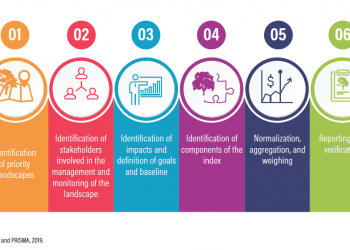Test data is data that has been specifically identified for use in tests. Typically, QA teams require a mix of static and dynamic data. Data can be in different formats, different databases, and of different types. QA testing process may require data from different sources according to the requirement of an application under test (AUT). Most of the time, data used for testing is production data because it covers all types of data which may appear in a live environment. Not only do QA teams require quality test data but test management tools too.
Simply imagine a scenario involving a banking transaction, where the testing team is provided confidential information including credit card number, and bank login credentials for testing purposes. Here, the risks of improper use of such data are high. Such a breach will not only result in financial loss but will also affect the customer trust which will eventually cause catastrophic damage to the business image.
Test Data Management (TDM)
Test data management (TDM) is a process that involves the management, planning, designing, storage, and retrieval of test data. It ensures that test data is of quality, and fits in the requirements of testing data. Following are the steps involved in test data management:
Analysis of Data Requirement
The first and foremost step is to understand the data requirement of the organization based on the test cases that a QA team will run. This requires knowledge of the domain, business, and all the applications involved in the entire process. For instance, in the case of a banking system that has a CRM system, having messaging systems for SMS and OTP. QA experts analyzing the test data requirement should have the expertise required in the banking domain, CRM, and financial application and messaging system.
Data Subset Creation
This is one of the most commonly used data creation techniques. QA teams copy the real production data to provide different subsets that work as the test data requirements. While copying the data, the team should take care of the accuracy, uniqueness, consistency and integrity of the test data. QA experts should create data for negative testing by modifying the subsets or adding some data.
Data Masking
When dealing with sensitive production data, it is extremely important to hide the customer data like bank login information, credit card credentials, phone number, address, etc. It is important to mask data or any failure to protect sensitive data can lead to compliance issues.
Automation and Tools
Automation can be utilized to perform tasks like data cloning, data generation, and data masking. Since all these steps can be time-consuming, it would be a great idea to use automation when dealing with huge data.
Data Maintenance
There is a central repository for test data that has rules for access. The test data needs to be refreshed on a periodic basis to ensure the latest and relevant test data. If multiple modules in a project use the same test data repository it is important to ensure maintenance. Data needs to be refreshed. Since the test data may become redundant over the passage of time, maintenance is important to keep it consistent and correct. Otherwise, data will consume storage space in the repository and the search for relevant test data may take a long time.
Why is Test Data so Important?
It is extremely important to have a systematic process to manage test data as it has great benefits for the business and its customers. Following are a few benefits:
Increased Test Data Coverage
Test data management provides traceability of test data to test cases and the requirements. It provides a complete view of the test data coverage.
QA Team’s Performance of Different Domains
As test data helps understand the QA team’s performance for specific domains it is important to implement TDM. For instance, if a team takes more time to execute with each new build or as a project progresses, this depicts that the QA team lacks knowledge. So this can also improve team efficiency and help managers in enhancing and focusing on their team’s expertise and skills.
Data is available based on the Testing Type
One of the most unique features TDM has to offer is that all data is managed in one place. With the help of the same repository, appropriate data can be available for different types of testing (functional, performance, etc.) It reduces the excess data copies and reduces the storage cost.
Data Compliance and Security
As data masking is a crucial part of a TDM process, QA teams can focus on data security and compliance with the standards set by the government.
Cost Reduction by Early Bug Detection
As TDM helps in better test coverage, it also helps in finding the bug early and reduces the cost of production.
Reusability of Data
The reusability of data reduces the costs as it is stored and archived in the central repository for future use. Testers can use the archived data whenever they require reusable data.
Reduces Multiple Copies of the Data
Multiple teams can make multiple copies of data for their use. This results in redundant copies of the same data. But with a TDM in the same repository is implemented, all teams use the same repository which tends to utilize the storage space carefully.
Customer’s Trust and Brand Equity
The TDM process ensures quality data and better test coverage which reveals the bugs in the early stages. This helps teams in developing a stable and high-quality application with minimum production defects. Customers have more trust in such organizations that tend to adopt the TDM process.
Conclusion
We know testing teams need test data and they may not have direct access to the production data. Even if they have production data, it is raw data that cannot be used directly for testing. In order to ensure high-quality data, it is important to implement the TDM process. It helps teams in achieving their desired results from testing efforts, and also helps them in unlocking their productivity.



